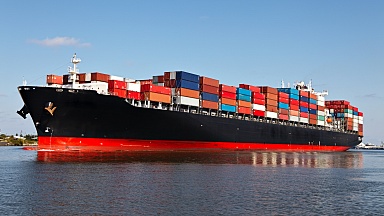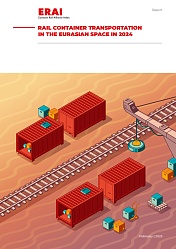Xi’an, located in Shaanxi Province in northwestern China, is a hub transit center, and the dry port is the largest in the country, where 40% of the total volume of container trains between China and the European Union is formed.
Over the past three years, the average annual growth rate of the number of trains on the China-Europe route in Shaanxi has amounted to 12.8%, exceeding 5.3 thousand trains, and the province ranks first in the country in terms of key indicators such as the number of trains, cargo gravity coefficient and cargo volume.
The Kazakh terminal in Xi’an was built in a fairly short period of time: construction was launched in May 2023, test operation began in December of the same year, and its official launch took place in February 2024.
According to JSC «NC» KTZ ", the capacity of the terminal in Xi’an is 66.5 thousand TEU per year.
In total, since the opening of the terminal in Xi’an, more than 30 container trains have been sent. In particular, regular shipments of container trains have begun in cooperation with BYD. In April, one container train was sent in the direction of Xi’an — Jizzakh, in total, according to the plan from BYD, 70 container trains are planned to be sent by the end of the year.
It should be noted that Xi’an is considered the largest inland land port in China, from where the China-Europe Chang’an railway express departs. And Xi’an Xianyang International Airport is the largest air hub in northwest China. After the airport expansion is completed in 2025, its passenger traffic will reach 83 million people per year, and cargo traffic will reach 1 million tons.
As the head of the commercial representative office of Shaanxi Province in Kazakhstan noted, the cargo terminal in Xi’an will not only expand access to the Chinese market for Kazakhstani exporters, but also open new sales markets, in particular in the countries of Northeast and Southeast Asia.
Vice Minister of Transport of the People’s Republic of China Li Yang, speaking at the forum within the framework of the China-Europe railway route in Lianyungang in September 2023, proposed to expand the new model of multimodal transportation China-Europe Railway Express. The Japan-Korea-Lianyungang-Almaty model was positively noted.
According to Chinese data, the China-Europe route covers 217 cities in twenty-five European countries and is very actively used. Trains have already run on it 77 thousand times, transporting over 7.3 million tons of cargo in both directions for a total amount of more than $340 billion.
Recall that since the launch of the Kazakhstan terminal in Lianyungang in 2014, more than 1.6 million containers have been transported. The terminal provides cargo handling from the countries of Southeast Asia and the Asia-Pacific region going both to Kazakhstan and through its territory to European countries, as well as in the opposite direction.
In 2023, the volume of traffic between Kazakhstan and China broke a new historical record of 28.3 million tons, an increase of 22% compared to 2022.
It is expected that the volume of transportation between Kazakhstan and China may increase to 40 million tons by 2025. To achieve this indicator and ensure the transportation of the projected cargo flow, JSC NC KTZ is working on the reconstruction and development of the mainline network of Kazakhstan railways.
To date, there are 4 key infrastructure projects, the implementation of which will achieve the intended goals: modernization of the Dostyk-Moynty section, a railway line bypassing the railway junction of the Almaty station, the Darbaza-Maktaaral railway line and the construction of the third railway border crossing Bakhty-Tachen with the construction of a new railway line Bakhty-Ayagoz".
The original is available in Russian
Руслан Сулейменов. 2024. «Какие рынки сбыта для Казахстана открыл сухой порт в Сиане.» Казинформ. МИА «Казинформ.» June 14, 2024. https://www.inform.kz/ru/kakie-rinki-sbita-dlya-kazahstana-otkril-suhoy-port-v-siane-a2e456.




